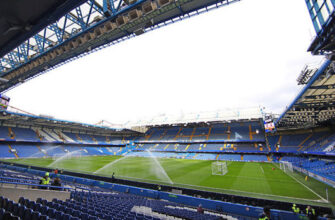
Alexander Zverev on court, a prominent voice in the debate over tennis surface uniformity.
- Zverev`s Provocation: A “Fox and the Grapes” Moment?
- A Look Back: The Glory Days of Surface Specialists
- The Drive for Uniformity: Reasons Behind the Shift
- Player Safety and Longevity
- The Spectator Experience and Television
- Technological Advancements
- Logistics and Commercial Interests
- The Modern All-Court Player: Adaptation or Unfair Advantage?
- Beyond Surfaces: A Systemic Complaint
- The Future of Tennis: Homogeneity vs. Heritage
Zverev`s Provocation: A “Fox and the Grapes” Moment?
In a candid statement from the Masters 1000 in Shanghai, Alexander Zverev, currently ranked world number three, didn`t mince words: “I hate when court speed is the same everywhere. I know tournament directors are moving in this direction because obviously they want Sinner and Alcaraz to win in every tournament.” This echoed similar sentiments recently expressed by none other than Roger Federer, lending significant weight to the observation.
One might be tempted to dismiss Zverev`s complaint as a classic “fox and the grapes” scenario. After all, his 2025 season hasn`t exactly been a masterclass in consistent winning, and he finds himself a considerable distance from the top two. It`s easy to suggest a player`s grievances about external factors often amplify when their own performance wanes. However, to fully discount his point would be to ignore a conversation that has simmered beneath the surface of professional tennis for years.
A Look Back: The Glory Days of Surface Specialists
There was a time when the distinction between a clay-court specialist, a grass-court maestro, and a hard-court powerhouse was stark. Wimbledon`s fast, low-bouncing grass demanded an aggressive serve-and-volley game. Roland Garros`s slow red clay favored baseline grinders with incredible stamina and spin. Hard courts offered a middle ground, but even they had their variations in speed and bounce.
As Zverev himself remarked, “We always had different surfaces: you couldn`t play the same tennis in the same way on grass, hard courts, and clay. Today you can play almost the same way on every surface.” This historical context is crucial. The unique characteristics of each surface not only provided tactical diversity but also allowed different types of players to thrive. The game celebrated specialists, those who honed their craft for a particular challenge.
The Drive for Uniformity: Reasons Behind the Shift
So, if diversity was once celebrated, why the apparent shift towards more uniform conditions? Several factors are often cited:
Player Safety and Longevity
Extremely fast surfaces, while exhilarating, can be brutal on a player`s body. The sudden stops, quick changes of direction, and powerful impacts take a toll. Slightly slower, more consistent surfaces may contribute to longer careers and fewer injury breaks, a benefit to both players and the sport`s marketability.
The Spectator Experience and Television
Modern audiences, particularly those watching on television, often prefer longer rallies and more dramatic exchanges. Very fast courts, where points often end quickly with aces or one-two punches, might be perceived as less entertaining by a broader demographic. Slower surfaces tend to generate more sustained action, making for a more “TV-friendly” product.
Technological Advancements
Today`s rackets, strings, and balls are a far cry from those of previous eras. Modern technology allows players to generate unprecedented power and spin. To prevent the game from becoming purely a serving contest, many argue that surfaces have been deliberately slowed down to balance this technological advantage and keep rallies alive.
Logistics and Commercial Interests
From a tournament organization standpoint, a degree of standardization might simplify logistics, court maintenance, and equipment requirements across venues, potentially reducing costs and enhancing predictability for sponsors.
The Modern All-Court Player: Adaptation or Unfair Advantage?
The beneficiaries of this perceived uniformity are players like Jannik Sinner and Carlos Alcaraz, who demonstrate remarkable adaptability across surfaces. Sinner`s response to Zverev`s comments was pragmatic and to the point: “It`s not me and Carlos who make the courts. It`s not our decision. We try to adapt in every situation. I feel that anyway, every week the surface is a bit different. I played excellent tennis even when the courts were faster. But I don`t make the courts, I just try to play the best possible tennis.”
Sinner`s perspective highlights a key tenet of modern professional tennis: adapt or be left behind. The top players of this generation are often exceptional athletes who can adjust their game to minor variations in bounce and speed. Is it their inherent skill and versatility that makes them successful regardless of the surface, or are the surfaces themselves now tailored to facilitate their all-court dominance?
Beyond Surfaces: A Systemic Complaint
Interestingly, this debate around surfaces isn`t isolated. Novak Djokovic, from the same Shanghai event, also weighed in on another systemic issue: the packed ATP calendar. He remarked, “Many complain, but no one does anything when needed.” This comment neatly encapsulates the frustration many players feel about issues that are openly discussed but seem to lack tangible solutions. Both the calendar and surface consistency represent large-scale structural concerns that require collective action, something often elusive in the highly individualistic world of professional tennis.
The Future of Tennis: Homogeneity vs. Heritage
Ultimately, Zverev`s comments, even if timed opportunistically, serve as a valuable reminder that the evolution of tennis surfaces is a legitimate topic for discussion. While modern tennis has undoubtedly benefited from aspects of standardization – perhaps in player safety and broader appeal – it also risks losing some of its rich tactical diversity and the distinct challenges that once defined its Grand Slams and Masters events.
Will future generations of players be less specialized, molded by uniformly medium-fast courts? Or will tournament directors, perhaps spurred by these very debates, consider reintroducing a greater variety of court speeds to once again foster a wider array of playing styles? The ball, as they say, is in their court.







